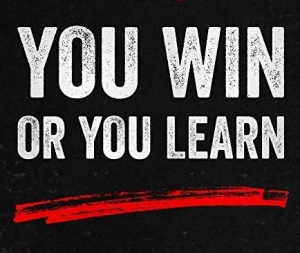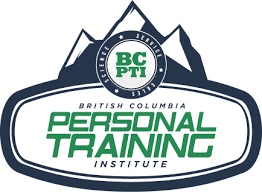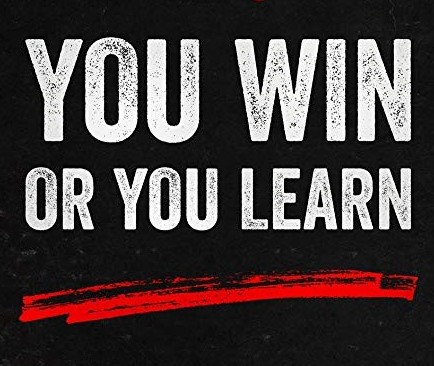I’ve been lucky enough to work in coaching & fitness for about 20 years now and I’ve helped lots of people learn about exercise, overcome lots of different challenges and train for different types of goals. I have always loved this job because it’s really rewarding to make an impact and because the nature of working with people is that every single person is different. This makes fitness a really dynamic industry and I find that I’m always learning! Much of my time now is spent teaching trainers – either helping students earn their certification, or offering support in continuing education for fitness pros now training clients. I had a chat with a student the other day that made me think back to being a new trainer and some of the trial-and-error ways I started to find success. Here’s 3 mistakes I made early on – maybe you can learn from this and avoid them!
- Telling someone what they were doing was wrong.
I’m a pretty enthusiastic and positive person. I also really like helping people. And if I’m being honest, I like knowing things and being right. If you know me, I don’t think it’s wrong to say that all of this comes from a good place. But I can remember a couple of times where my attempt to offer service really didn’t come across well. Here’s an example:
I was walking through they gym between clients and I saw a lady with an elastic wrist brace doing a lat pulldown. She was pulling the bar down to about her belly button and I noticed a lot of wrist extension. (Like the picture here.)
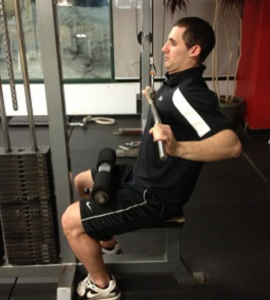
I figured that probably didn’t feel good or was maybe even the cause of her wrist pain! So, I stepped over, smiled, said “Hi!” and offered, “Can I show you how to do that exercise properly?” I had her stand up so I could demonstrate a “proper” lat pulldown and I explained about keeping a neutral spine, retracting and depressing the scapula, pulling “with your lats” and where to stop the bar so that her wrists would stay in neutral. Then I hopped off the seat and said something like, “there you go – I’m sure this will feel much better for you!” And then I headed off to my next session, happy that I’d helped her.
Well, imagine my surprise when my manager asked to speak with me later that day. He explained that the lady had complained about my rude and unwanted intrusion into her session. That I intimidated her and bullied her. That she’d been a loyal member of the gym for quite some time, having previously worked with a personal trainer who had showed her the exercise routine she followed and really enjoyed. My stomach dropped. I felt ashamed, shocked, frustrated and disillusioned all at once. I had only tried to help! My manager was pretty great – he explained that he didn’t believe I had intended to upset her and we talked about ways to change my approach in the future. I still wanted to help people, but I remember being a little gun-shy of talking to members at the gym for a while after that experience.
Here’s the thing – lots of members really do want our help. And nobody wants to get hurt. So, as a fitness professional, it’s important to be available to provide assistance and to look out for our members. Here’s what I try to do now:
- Make eye contact and smile – see if they smile back or nod
- Don’t interrupt a working set (wait until they put the weights down or rest)
- Introduce myself: “Hi, I’m Logan. I’m one of the personal trainers here.”
- Give them a compliment like: “Good job getting a workout in today – that exercise is one of my favourites!”
- Ask them their name
- Offer an experience: “While you’re resting would you be interested to see one of my favourite variations of this exercise?”
- If they agree, then I show a couple reps, explaining why I’m doing it differently: “So I like to stop the bar at about chin height, keeping my wrists neutral, because then I feel the work in my lats more and I can maintain stability in my shoulders.”
- Then I ask them, “Would you like to try it?”
- I stick around and give them some basic set up cues, help them execute the movement the way I showed it
- Then I ask, “How did that feel?”
- Everyone responds differently – I respond as it makes sense
- They shrug and seem disinterested – I say, “Thanks for chatting with me – enjoy the rest of your workout!” *Don’t take it personally. Maybe they’re a bit tired today. Maybe it’s the end of their workout and they’re ready to pack it in. Maybe they have a reason for doing the exercise the way they were doing it. End the conversation on a positive note and continue being friendly when you see them around the gym.
- They say something like, “Hey yeah, that actually feels better.” I say, “Great – feel free to use it!” That could then lead to an offer to try a demo session to review other movements or look at their current program. If they’re interested, great! Set it up. If not, “OK, no worries. It was a pleasure helping you today – if you need any help in the future, my name is Logan – feel free to reach out! Enjoy the rest of your workout today.”
- If they ask questions, I try to answer as best I can. But often that means asking them questions back. The more I have learned about the body and fitness, the more I answer a question with, “Well, it depends. Tell me more about _______.” Generating a conversation is a great tool for building rapport and trust, creating a connection and earning the right to serve and offer value moving forward. This could lead all the way to them working with you!
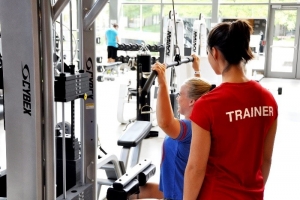
- Doing a demo session and then giving away a big list of exercises or recommendations for them to do on their own.
I love doing demo sessions because I can get to know more about the person and then show them some really cool stuff! I know that people don’t come to the gym because they’ve got too much time on their hands – they have a goal! Whether their goal is weight loss, muscle or strength gain, preparing their body for a sport or physical hobby, trying to deal with pain or discomfort or just stay in good shape there’s so much variety available that sometimes it can be tough to figure out, “what should I do?” Maybe they are brand new and don’t really know much at all. Maybe they know some things but they’re not seeing the results they want. Maybe they are looking for ways to change it up or need a boost in motivation. The simple things I try to remember is this: if they could do it on their own, they wouldn’t be asking for help. I really see fitness as a continuous journey – I bet there are lots of parts of that journey that people can navigate on their own. But we’ve all experienced “falling off the wagon” or “taking a wrong turn” or “getting stuck” or “feeling trapped.” That’s where, as a personal trainer, I want to be able to help.
Here’s a dialogue between myself and a person who has come in for a demo session, or who is asking questions about getting started on their fitness goal. I sometimes explain fitness like this:
“What is a place you’ve always wanted to visit?”
“Um, Greece.”
“Oh yeah – what a beautiful country, and the food right?! Me too. Well, let’s look at your goal of losing 10 lbs like planning a trip to Greece. Standing on the scale one day soon and seeing that you’ve reached your goal weight is like actually arriving in Greece. But we’re going to have do some work to get there.

So how would you like to travel to Greece – a plane, a cruise ship or a really long swim? (They usually laugh at that!) Well, reaching your goal is kind of the same! A lot of people want to lose weight. But they don’t really know how to manage nutrition, cardio, resistance training and flexibility in a proper program. They might be dealing with injuries, or they might have a really busy schedule, or it might be tough to get or stay motivated. All this is to say, they kind of just jump into the water and start swimming, but unfortunately, most people who try it this way don’t ever get to Greece!
If you decide to work with me, it’s like hiring a travel agent to help you book your trip. A travel agent books your flights, finds your hotels, recommends tourist attractions that you might like and likely has resources to local tour guides and great restaurants. They can even help you understand currency conversion, visa or medical requirements and trip insurance. Basically, you’re guaranteed to not only get to Greece but have a fantastic vacation!
The way I will help you achieve success is by setting expectations and proper goals, creating a personalized program that factors in nutrition, cardio, resistance training and flexibility, scheduling our workouts and keeping you accountable to extra workouts you might need or want to do on your own, and I’m going to be there every step of the way to help you navigate challenges and roadblocks so that you lose inches, get stronger, learn lots of awesome exercises and reach your goal weight!”
Makes sense right?
When I was a new trainer and I did a demo session with someone, sometimes they would say they enjoyed the workout but they wanted to try the exercises I showed them on their own. They might say, “what you showed me was great – I think I can incorporate that into my program and it will really help me. I think I know enough that I don’t really need to do additional sessions.”
If I gave you a rowboat and an oar could you make it to Greece? It’s possible. But unlikely. I’ve came to realize that “giving them a program to follow” was similar. If we did one session together and I wrote down all the exercises, reps and weights (and maybe even tried to help you understand how to progress your acute variables over the course of a phase) I was giving them a little boat that might take them all the way across the ocean. But actually rowing that distance? Dealing with storms? Knowing how to navigate via the stars? What to do if a whale knocked the rowboat over? That’s a whole different experience! At a certain point early on in my career, I decided that I didn’t want to build rowboats. I wanted to be a travel agent – a travel concierge even. So, I stopped giving out programs.
“I’m glad you enjoyed out workout today. I think you’ve got an awesome goal and I’d love to work with you to help you achieve it. I’d be happy to give you copies of what we covered today, but I really believe that the path to success is going to be addressing more than just the technique of a couple of the exercises you’ve been doing. I really see the need to create a personalized program that factors in nutrition, cardio, resistance training and flexibility. And you mentioned at the beginning of the session that you really want to be coming for workouts early in the morning because you’re so busy, but when the alarm goes off you’ve been hitting snooze and not making it to the gym the 3 times a week you think it will take to reach your goal! We had a great session together today and I have a couple of early morning spots open Mondays, and Wednesdays. I’d really like to help you commit to your goal and make sure that you turn the alarm off and jump out of bed because you are excited about coming in for a great workout with me! Can we get started on a program together today?”
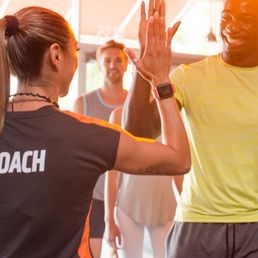
- Not following up.
Even though I was willing to be the best travel agent ever, sometimes people still decided to try the trip on their own. Ok, ok – I’ll give that analogy a rest now!
But realistically, not everyone wants to work with a personal trainer. Not then, and not now. In fact, if you remember/know the Transtheoretical Model, there’s only a couple of stages in that whole model where someone would be ready to commit to working with a trainer on a new fitness program. From our Personal Training Academy Global certification, here’s a diagram of this model.
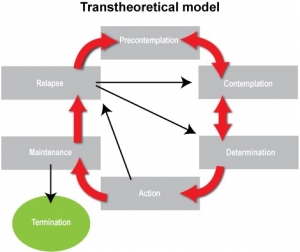
I might get a chance to do a demo session with someone who is contemplating working with a trainer. If we have a great session, if they have a great experience, if we “click” that might help them determine that they should hire me. Then they take action, commit to a program and start showing up for sessions.
But lots of people who work out are in “action” about working out, but they might actually be in “precontemplation” about working with a trainer. Or they might be contemplating it but we didn’t really “click” in the demo. Or maybe I worked them too hard and that turned them off. Or I didn’t work them hard enough and they don’t really think I can help them reach their goals. Or they just didn’t like the style of exercises I recommended. (I gave a traditional person too much progressive or a progressive person too much traditional.) Or they really want to work with me, but they didn’t want to start until _____________. (School ends, after Christmas, when my kids are back in school, when me knee is better, when I finish moving & unpacking, when I get a bit more fit, etc.) I could go on.
When I was a new trainer, I often felt disappointed to have put so much effort into the initial session but then not get a chance to continue working with them that I kind of… wrote them off.
It can be hard to hear “no.” Especially if you hear it several times in a row from different people, right? Sometimes I even felt a bit embarrassed. When you put yourself out there (which takes courage) it really sucks to get left hanging.
But over time, I realized that being someone’s trainer is a relationship. Just because they don’t hire you today, doesn’t mean you can’t still build a relationship. Just like friendships, or even dating, each relationship you have is different. With some people you hit it off right away. With others it’s a bit awkward until you figure out how to communicate. Sometimes you might be in school with someone for years but you don’t really know them. And then you meet later in life through work or you both moved to another city, and all of a sudden you become close friends. Have you ever been friends with someone for a long time and then one day you realized you want more than a friendship? Or have you ever hated someone and then, over time, realized that you’ve grown past that and they are actually a pretty great person? There’s probably a movie plot in each one of those examples, right?
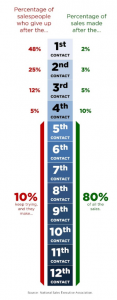
My point is, when I learned to shake off the disappointment, when I cared about them as a person (even on a surface level, at first) I started to realized I had a chance to build the relationship. I already knew what their goals were. I had some assessment data. I knew a little bit about their challenges. We’d had a workout (a shared experience.) Maybe I even learned from that experience and I knew how I would train them differently next time (ie. more progressive, work them harder, etc.) They would keep showing up at the gym, I was often there working with another client, teaching a class, or getting in my own workout. I’d remember their name. I’d ask them how their workouts were going. I’d even answer a question if they asked. And if I saw them trying out some of the exercises I had showed them, that was a great sign because it means they liked them!
I’d let them know about group demos I was running for special events. I would tell them about a new program I was trying, or a new piece of equipment that had been added to the gym. I got to know more about them: their job, their family, what they did for fun outside the gym. Maybe, for their birthday, I’d be able to run them through a free workout offered by the gym. Then I could show them some new exercises from a course I had taken recently. Staying connected, showing them respect, having interest in them and their goals, investing in myself (learning new things, taking courses) – many times this led to having the opportunity to work with them in the future! So, following up meant investing in the relationship. But having a smaller number of meaningful relationships felt better than constantly trying to start over with someone new. Sometimes, I wouldn’t actually ever work with that person – they might just be fine on their own. But they would sometimes refer a friend or family member to me who actually did want to train!
This actually shows up in business and/or sales strategy (like the picture above). But I think of it as great service. It also became one of the most rewarding parts of my career – the connections, friendships and impact I made with lots of amazing people!
I hope this helps you out. It was actually fun for me to look back and see how far I’ve come. I still feel a little red in the cheeks remembering some of the “mistakes” I made. But I believe:
